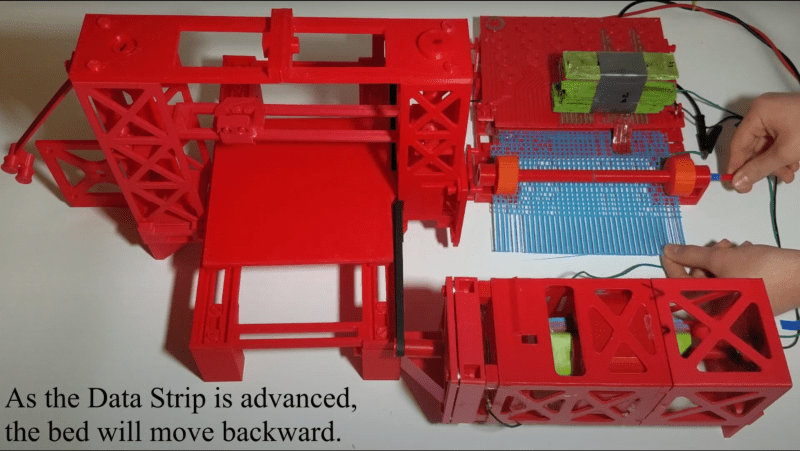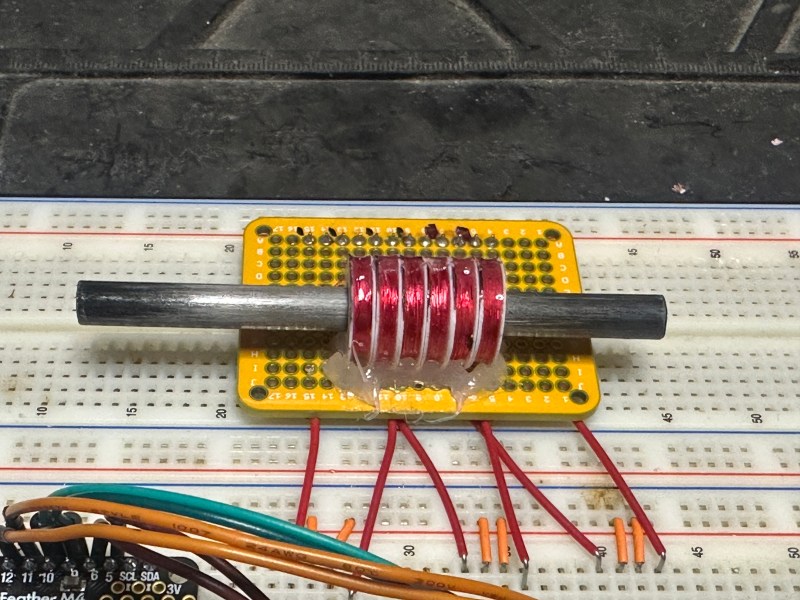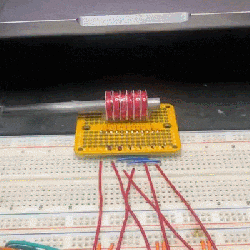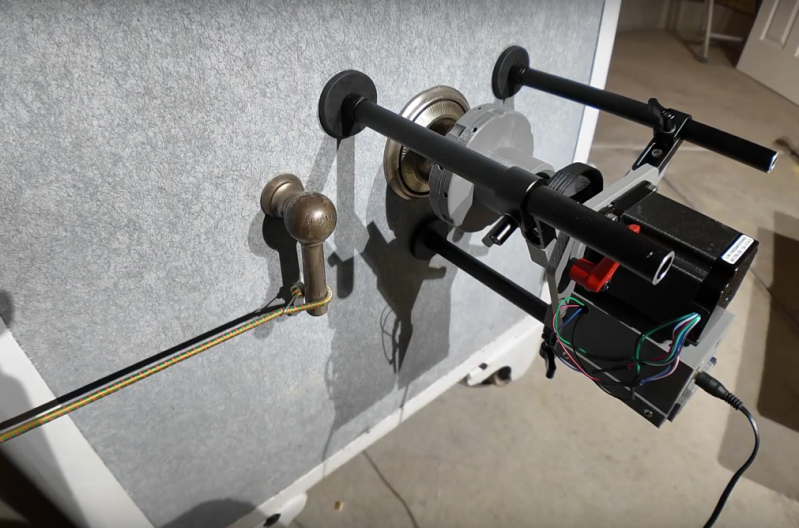The Most Printable 3D Printer Yet

Despite the best efforts of the RepRap community over the last twenty years, self-replicating 3D printers have remained a stubbornly elusive goal, largely due to the difficulty of printing electronics. [Brian Minnick]’s fully-printed 3D printer could eventually change that, and he’s already solved an impressive number of technical challenges in the process.
[Brian]’s first step was to make a 3D-printable motor. Instead of the more conventional stepper motors, he designed a fully 3D-printed 3-pole brushed motor. The motor coils are made from solder paste, which the printer applies using a custom syringe-based extruder. The paste is then sintered at a moderate temperature, resulting in traces with a resistivity as low as 0.001 Ω mm, low enough to make effective magnetic coils.
Brushed motors are less accurate than stepper motors, but they do have a particularly useful advantage here: their speed can be controlled simply by varying the voltage. This enables a purely electromechanical control system – no microcontroller on this printer! A 3D-printed data strip encodes instructions for the printer as holes in a plastic sheet, which open and close simple switches in the motor controller. These switches control the speed, direction, and duration of the motors’ movement, letting the data strip encode motion vectors.
Remarkably, the hotend on this printer is also 3D-printed. [Brian] took advantage of the fact that PEEK’s melting point increases by about 110 ℃ when it’s annealed, which should allow an annealed hotend to print itself. So far it’s only extruded PLA, but the idea seems sound.
The video below the break shows a single-axis proof of concept in action. We haven’t been able to find any documentation of a fully-functional 3D printer, but nevertheless, it’s an impressive demonstration. We’ve covered similar printers before, and if you make progress in this area, be sure to send us a tip.



